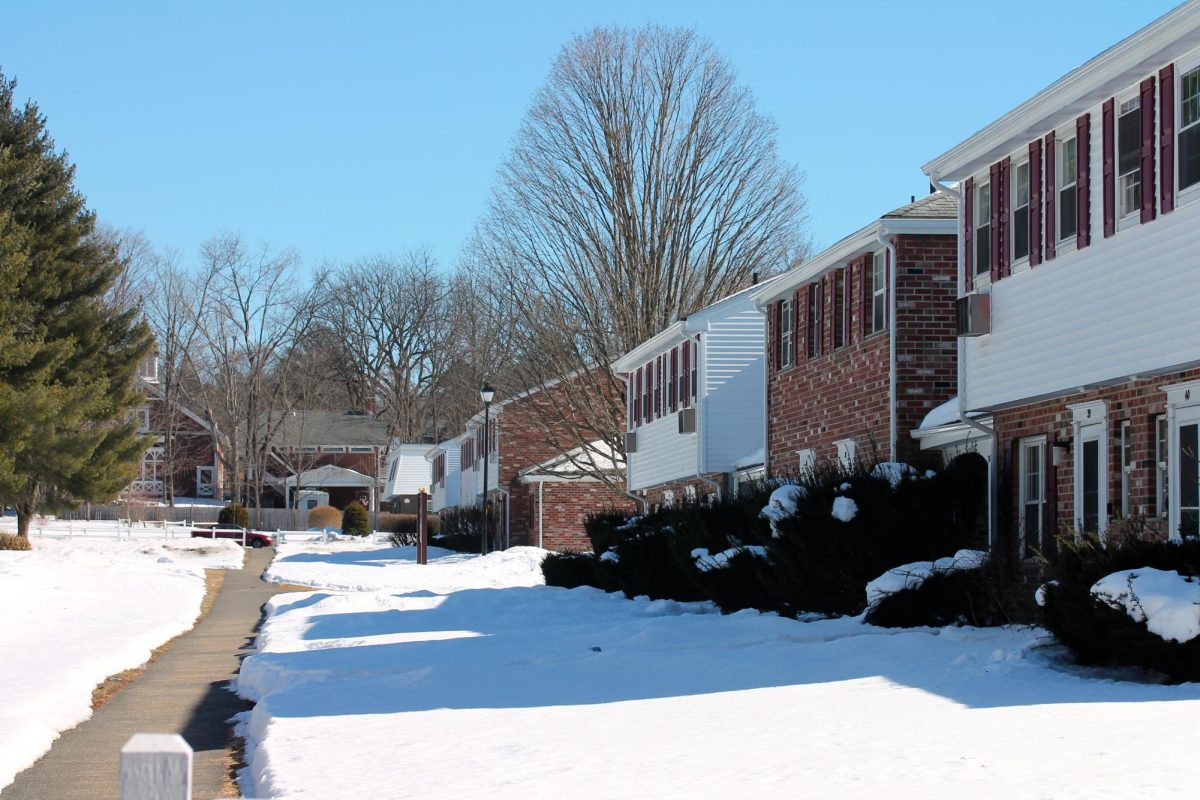There is no finer, more profitable monopoly in a college town than the one on mistakes. Each morning reminds me of this as my car crawls along in traffic past the illustrious Route 9 residence, the College Inn. It’s an “economical” apartment building, mass produced in every sense, with thick, crusty grey paint and an overall greasy appearance; its roadside location refreshes it daily with an endless fluttering wind of McDonald’s bags and empty beer bottles. Each night, the air swells with the warm, cheesy smell of Pioneer Valley Pizza and the clacking billiard balls from the bar next door.
Kamins Real Estate offers all this and more for, yes – only a one-time, all-inclusive contractual obligation. But in this monopoly, this is only one cash trap of many set to lure in naïve people.
The symbiosis between students and the actual town of Amherst has evolved into an overly-dependent, warped relationship. Young minds and sumptuous wallets led Amherst and neighboring whistle-stop towns to become dwarf theaters for an on-going game of financial Risk; small armies of businessmen-to-be clash, struggling over dibs on every profitable industry in this college town.
How and when a simple thing like education became so lucrative, I don’t know.
But history shows that these zealots of fast food and real estate colonialism aren’t the first of their kind. It seems Amherst, including much of America, emerged in history by this very same venture capitalism.
According to Edward Carpenter’s book, “The History of the Town of Amherst, Massachusetts,” a smooth talking John Pynchon from Springfield procured the first deeds to Amherst. In 1658, he got himself a choice piece of land from the local Norwottuck tribes in exchange for some 200 Wampam – rare shells used by those natives.
Years later, Jeffery Amherst, a French and Indian War hero, concocted a brilliant, cost-effective ruse to oust those tribes once and for all and enlarge his town: give them all blankets infected with smallpox. Fortunately, this wasn’t carried out. But fate was inevitable, and those tribes have long since vanished.
While the Civil War ravaged the Mid-Atlantic, Amherst still prospered. By 1863, Amherst had grown considerably, with some 3,500 residents and a new university, created from the progressive Federal Morrill Land-Grant Colleges Act. For all intents and purposes, the goal of the university was to instruct citizens in military tactics, mechanics and agriculture.
So you see, the tradition of venture capitalism, as it were, suffering but minor alterations, has stayed the test of time. But what was a quiet New England town with a college then, hosts countless vendors of weird goods and strange services now.
A Google Maps search reveals that Amherst boasts six gas stations, ten chiropractors, eight gyms and twenty pizza shops, add that to several low income housing units shared jointly by college students and actual low income families, and you have a jumbled communal identity.
What sort of picture can be painted from these colors: people who crave pizza, but are self-conscience about their weight; who drive, but have back problems; who are rich, but live with poor.
A town like Hadley, which recently celebrated its 350th birthday, hardly boasts a historical, or cultural monument other than a Home Depot and a Staples which can be seen from the moon; most distinguished businesses on the Route 9 strip peddle fast food, booze and cubic zirconia earrings.
While Amherst seems more or less like your average town, capricious consumerism pumps tainted blood into healthy limbs of the community.
Goods and services are popping up which don’t contribute to any long term communal goals. Capital harvested from a town’s McDonald’s and Sunoco Stations goes immediately into a private pocket. These are all excessive and impulsive buys; I don’t think a couple extra gallons of gas or a Big Mac are, or ever will be, good, necessary ideas.
If Amherst could be wrung out like a sponge, it would leak drops of every element within an average size city. An optimist perhaps could see the positive side of this: the entertainment, restaurants and free transit. But try as I may, I just see a little old town too big for its mini-skirts and Dickies britches, a town which has grown too large to hold and foster its permanent population, and its youth.
And for those who do love this town for its natural charm and character, hopefully in the end it will not have garnished false hopes in you, in leading you to believe that any town could, in fact, outlast the ever sweeping arm of time.
Evan Haddad is a Collegian columnist. He can be reached at [email protected].






